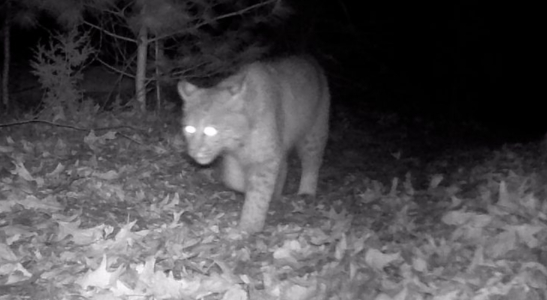Bobcats are the most common wildcats in America, yet they're also rarely seen by anyone outside of a zoo. As home security technology continues to become more prevalent, however, that's beginning to change.
Ring camera doorbells, home security cameras, and cellular or Wi-Fi trail cameras are doing what humans struggle with — spotting bobcats. "It's like hitting the lottery," said David Crockett, Animal Control Officer in Lynnfield, Massachusetts, according to Itemlive.

It was a trail camera that captured an image of the elusive wildcat in a Lynnfield resident Steve Fantone's backyard, an extremely rare find despite the bobcat's extensive range, which spans the southern provinces of Canada, through all 48 contiguous states, and into Mexico.
"It was similar in size to a small or medium-sized dog," Fantone said. "Bobcats have always been here because it's a habitat that has things for them to eat, like mice and birds and I have some video showing one stalking a rabbit.
This is what makes trail cameras so important in several ways, well beyond just spotting evasive bobcats. They offer a noninvasive method for scientists to study animals, their behavior, patterns, long-term data collection, and habitat use.
We've long known that human presence affects animal behavior, as a study published in the Journal of Zoological and Botanical Gardens shows.
Save $10,000 on solar panels without even sharing your phone number Want to go solar but not sure who to trust? EnergySage has your back with free and transparent quotes from fully vetted providers that can help you save as much as $10k on installation. To get started, just answer a few questions about your home — no phone number required. Within a day or two, EnergySage will email you the best local options for your needs, and their expert advisers can help you compare quotes and pick a winner. |
From a conservationist perspective, trail cameras are powerful tools of discovery, contributing to population monitoring, demographics, abundance, density, human encroachment, diseases, invasive species, anti-poaching, and general evidence collection.
The information gathered from a single trail camera is enormously helpful in these efforts. Now, imagine several of them strategically spread out across a geographic area.
These smart measures, coupled with ever-advancing technologies, help preserve these animals, ensuring their longevity, health, and rehabilitation when necessary.
Animals exist on countless interconnected food chains, from primary producers to primary and secondary consumers, and so on. Remove one species from the equation, and it potentially mimics the game of Jenga, with everything crashing down in chaos.
|
Do you worry about air pollution in your town? Click your choice to see results and speak your mind. |
Pollinators, plants, herbivores, carnivores, omnivores, etc., each impacting the next in positive or negative ways. A trail camera can record this information without meddling with the cycles.
The bobcat is a primary example of this. Human intervention, if only to observe from a quiet, camouflaged viewpoint, creates a disturbance that elusive, solitary animals can detect. It's difficult to spot a bobcat in person for a reason.
"Real wildlife is happening all around us. We've pushed them out of their environment," Crockett continued. Wildlife persists, and ultimately, conservation efforts will continue to strive for healthier and more diverse ecosystems.
Join our free newsletter for good news and useful tips, and don't miss this cool list of easy ways to help yourself while helping the planet.















